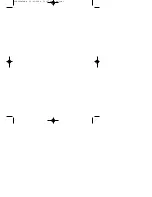
PCIe-24DSI32
_____________________________________________________________________________
General Standards Corporation Ph:(256)880-8787 FAX:(256)880-8788 Email: [email protected]
3-4
3.4 Analog Input Configuration
Configuration of the analog input networks is controlled by the BCR control bits designated as
AIM[1..0], the effects of which are summarized in Table 3.4. The analog input selection
arranges all input channels in differential configuration during normal operation, or invokes one
of two selftest modes.
Table 3.4. Analog Input Function Selection
AIM[..0]
FUNCTION OR MODE
0
Differential analog input mode.
1
(Reserved).
2
ZERO test. Internal ground reference is connected to all analog input channels.
3
+VREF test. Internal voltage reference is connected to all analog input channels.
3.4.1 Selftest Modes
Two selftest modes provide the ability to verify the accuracy of any or all input channels by
replacing the system input connections with either a precision internal reference voltage
(+VREF) or a zero reference (ZERO). The +VREF test produces a positive value equal to
99.00 percent of the selected input range (e.g. +9.900 Volts for the ±10 Volt range) from all
input channels, and the ZERO test should produce a value of 0.000 Volts. The accuracy of
selftest measurements should correspond to the product accuracy specification.
NOTE:
For maximum test accuracy, the internal reference voltage must be allowed to
settle completely when the test mode is changed. After selecting either of
these test modes, insert the indicated minimum settling delay before acquiring
test values:
ZERO test: 100 milliseconds,
+VREF test:
3 seconds.
3.4.2 Input Range Selection
Any one of three input voltage ranges can be selected for all channels. RANGE[1..0] control
bits in the BCR select the input range, as shown in Table 3.4.3.
Table 3.4.3. Analog Input Range Selection
RANGE[1..0]
ANALOG INPUT RANGE
0
±2.5 Volts
1
±2.5 Volts
2
±5 Volts
3
±10 Volts
















































